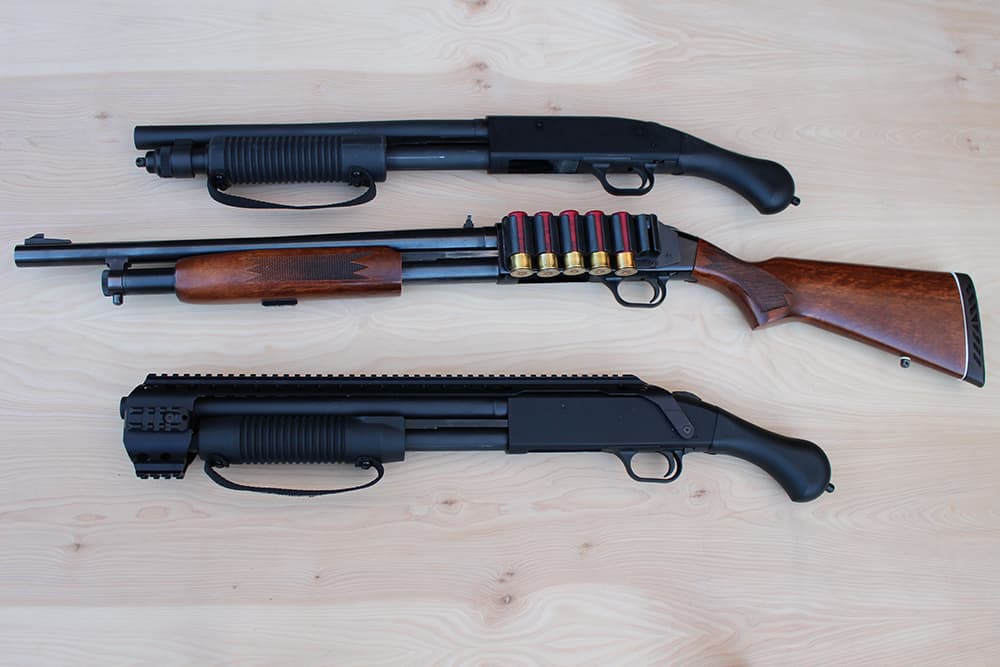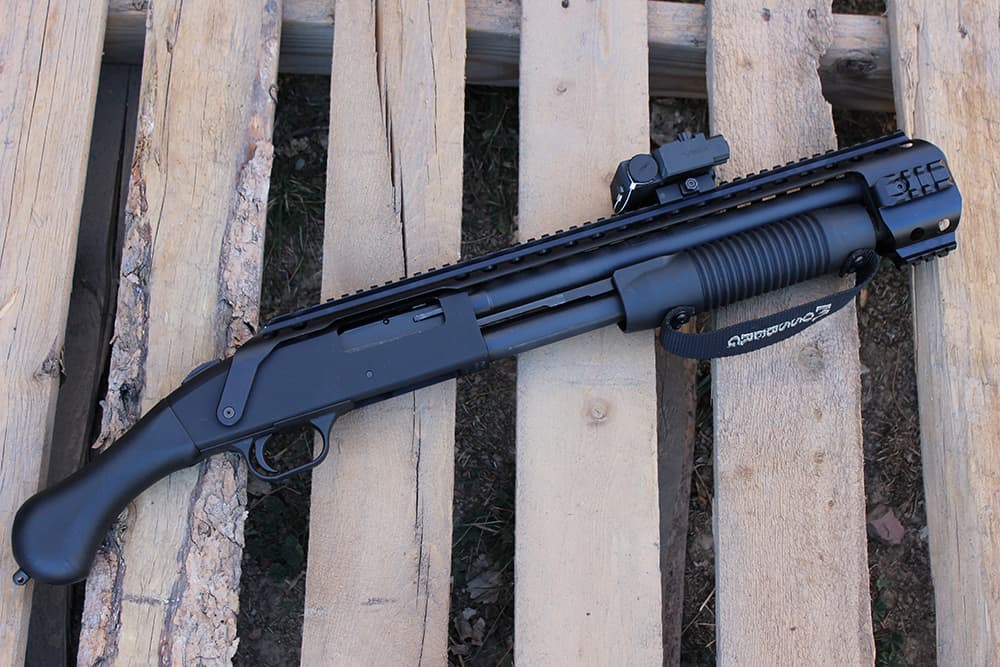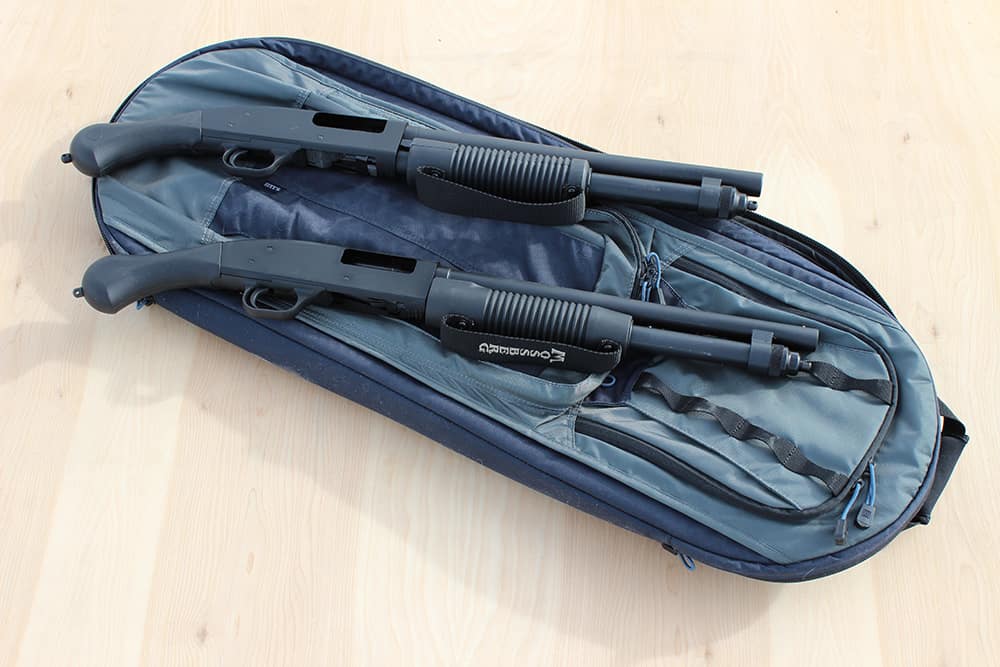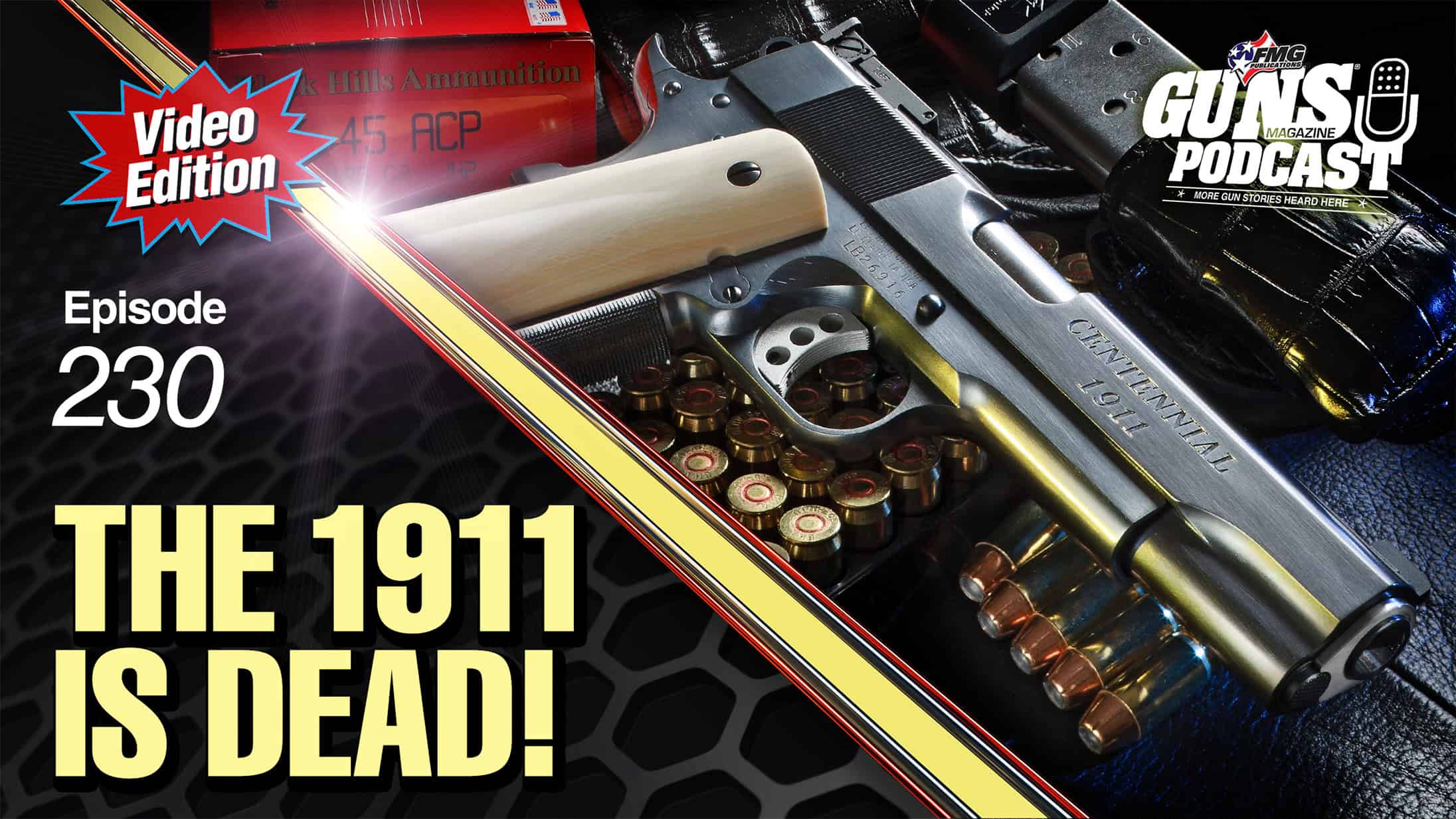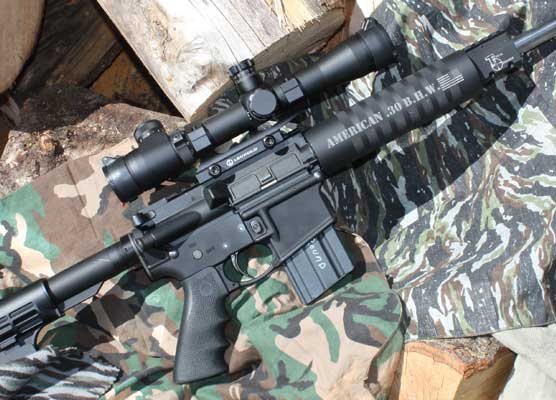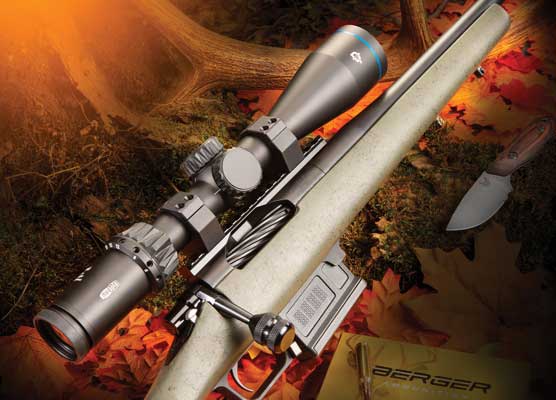A Second Amendment Shockwave
A Unique Self Defense Firearm For Close Quarters Work.
I like pump-action shotguns.
There is no other firearm type as versatile. One receiver with a slug barrel for deer hunting and another barrel or two with removable chokes can handle most forms of hunting, self-defense and recreational target shooting.
One of the earliest examples of a pump-action shotgun with a barrel shorter than those traditionally used for sporting purposes is the Winchester Model 1897 Riot Gun. During World War I, Winchesters were issued to American troops fighting in the trenches in France. These “trench guns” loaded with buckshot were devastating at the conversational distances most battles occurred as first one side and then the other tried to overwhelm the enemy line. After one notorious engagement where 200 American soldiers armed with shotguns literally stopped a German infantry charge dead, the German government actually lodged a formal protest! Easier to use in tight places than its longer barreled sporting cousin, the shorter barreled pump-action shotgun had secured a place as a fighting weapon that continues to this day.
At first glance, Mossberg Shockwave shotguns might remind you of the trench guns of WWI. The idea behind the design is the same: Provide the user with devastating firepower for close quarters combat. At top is a 12-gauge model and below is the 20-gauge version.
Federal law dictates that in order to be legal, shotguns must have barrels that are a minimum of 18 inches in length and minimum overall length of 26 inches. The law does allow for barrels to be cut shorter than the requisite 18 inches, but only after a $200 excise fee has been paid to Uncle Sam. These shotguns then fall under the designation Short Barrel Shotgun (SBS). In addition to federal restrictions, not all states allow ownership of SBS firearms or other special weapons such as machine guns — also subject to the National Firearms Act of 1934. These regulations apply not only to private citizens, but also to government entities such as police departments. This is the way it’s been — until now.
Recently the Bureau of Alcohol, Tobacco and Firearms (BATF) wrote a letter to Mossberg defining the legal status of the Shockwave shotgun. The full letter can be viewed at Mossberg’s website, but basically it says the legality of this shorter barreled shotgun was decided based on the requirements of the National Firearms Act of 1934 (NFA) and the Gun Control Act of 1968 (GCA). The Shockwave is a “firearm” subject to GCA provisions; however, it is NOT a firearm as defined by the NFA. This means the Shockwave does not meet the 1934 definition of a sawed-off shotgun, but under the GCA definition, it can be treated as a firearm, requiring only a standard background check like any other pistol, rifle or shotgun. One very important point is if someone were to replace the Shockwave’s bird’s-head pistol grip with a shoulder stock, the legal classification of the gun would then be subject to the NFA law regarding short-barreled (sawed-off) shotguns. Also, concealing the Shockwave under a coat (i.e., a concealed weapon) may change the legal classification.
Here’s the bottom line: Buy the Shockwave firearm through a dealer who holds a Federal Firearms License (FFL). Just as with any other pistol grip firearm, the buyer must be at least 21 years of age and a resident of the state where she/he is purchasing it. Be sure to conduct a federal background check prior to purchase or sale. Never replace the bird’s-head pistol grip with a full size, traditional shoulder stock. Never put the Shockwave barrel on another shotgun. Transport the gun in a gun case. Do not carry the gun concealed under a coat. It wouldn’t be a bad idea for Shockwave owners to download the BATF letter from Mossberg’s website, read it and carry a copy in the gun case with the shotgun, just in case a law enforcement officer ever questions the legality of the firearm.
The Shockwave (top) is obviously smaller and more compact than a traditional “long gun” like this 18-inch-barreled Mossberg 500 (middle). At bottom is the Shockwave equipped with a Black Aces Tactical Quad Rail system.
The recommended way to shoot the Shockwave is to hold it horizontally at the waist, trigger hand against the hip. Another possible horizontal position is to hold it almost up to the armpit and pectoral muscle, trigger hand against the rib cage. There is a nylon strap that is attached to the front and rear ends of the forend. Use it — always! It’s there to stop the support hand from accidentally slipping in front of the muzzle when the gun is being fired. This is possible, especially when firing multiple shots rapidly, because the Shockwave has such a short barrel.
In this position, it’s quite easy to make solid hits on man-sized targets at conversational distances and maybe a bit farther. Some shooters are more conscious of recoil than others. It’s why it’s often called perceived recoil. There are ways to mitigate recoil in shotguns. The simplest way is to shoot ammunition with less gunpowder and/or a slug or load of shot weighing less than standard hunting loads. Companies like Fiocchi and B&P offer reduced recoil slug loads and Aguila produces shot shells 1¾ inches overall length in 12-gauge slug, buckshot and birdshot loads. These reduced power loads allow shooters who are sensitive to the recoil produced by standard loads to shoot shotguns more comfortably. The Aguila Minishells certainly seem to be popular. The only loads I was able to acquire locally were the slug and birdshot loads. Shooters who are sensitive to the recoil of standard loads might find these shorties less punishing. Out of a Shockwave, they are some people’s choice for self-defense and the birdshot load should work well against rattlesnakes. However, simply loading the Minishells into the shotgun’s magazine and then racking the slide usually results in the shell being flipped back-to-front in the carrier. In order to load the short shells reliably from a tubular magazine, the shooter should install a little rubber block called an Opsol Mini-Clip into the back end of the shotgun’s action, behind the tubular magazine. Mini-Clips are designed to fit the following 12-gauge pump action Mossberg shotgun models: 500, 590, 590A1 and Maverick 88.
Shooting the Shockwave works best when the trigger hand is tucked in against your ribs (or higher, near your armpit and pectoral muscle) and the opposite hand is inside the nylon strap.
The Shockwave has garnered a great deal of interest among shooters, so Mossberg announced it is also available in a 20-gauge model based on a scaled-down Mossberg 590 receiver. (Perhaps they should have called it an Aftershock.) The overall length is 26.4 inches, weight is 4.95 lbs. and capacity is six rounds. The receiver has all the features of the standard 12-gauge Model 590 including twin action bars, dual extractors and an aluminum receiver. It will chamber 2¾ and 3-inch 20-gauge shells. Just like the 12 gauge Shockwave, there is no shoulder stock, just the bird’s-head pistol grip constructed of glass-filled polymer with a non-reflective, black finish. Mossberg has also released a .410 version as well.
Short-barreled shotguns are compact for carry, far easier to control than I expected and devastating at short range. But sniper rifles they ain’t. The barrel needs to be patterned at various ranges using the same load, brand and lot number of ammunition used in the field. Each new case of ammo needs to be patterned because patterns can vary between lot numbers. Even two identical shotgun barrels can produce different patterns. Pattern size varies based on the following variables: brand/manufacturer, loading (pellet size and number) and lot number of ammunition. The goal is to determine the maximum distance to target that will result in all pellets staying in the target.
The addition of a red or green dot micro laser sight system enables shooters to make precision hits with slugs up to, in some cases, 25 yards away depending on the individual shooter’s ability. After spending years on shooting ranges watching inexperienced shooters attempt to sight-in lasers on their handguns, I confess I’ve become a bit jaded about laser sights on firearms. But the Shockwave is different. It is not intended to be aimed at eye level. I think the Shockwave would benefit from a laser mounted close to the barrel. It would likely increase the effective range, especially with slugs. Various companies make a short Picatinny rail that mounts to the top of the receiver and then a small laser can be mounted on the rail.
You can mount a laser aiming system on a Shockwave; a good idea for a gun not intended to be sighted at eye level. Laser shown mounted on Black Aces Tactical Quad Rail system.
One of the cool things about shotguns is they allow for a wide range of custom modifications to the standard factory model. The basic Mossberg pump-action design can be tweaked as a hunting, competition or self-defense shotgun in so many ways; something the folks at Black Aces Tactical understand. They produce a full-length Picatinny rail designed specifically for the 12- and 20-gauge Mossberg Shockwave. For a limited time, they are including a spike that attaches to the magazine cap that serves as a standoff device when using breaching rounds to blow door locks and hinges. It would be tempting to use the spike as a motivational tool to move stubborn prisoners or radical activists out of the way, but the fact is pointing a firearm at anybody or anything you are not willing or intending to shoot is a bad idea and goes against one of the fundamentals of gun safety. Use the spike only when blowing up door locks.
Shooting The Two Shockwaves
The first shooting session was conducted with the 12-gauge Shockwave just as it came from the factory. Ammunition was B&P 3-gun competition reduced recoil 1 oz. slugs. Shooting was conducted at ranges up to and around 10 yards. Shooting the Shockwave from the recommended position — held horizontally against the hip and also higher against the pectoral muscle, with the support hand through the webbing loop on the forend — made it pretty easy to make solid hits on a B27-sized target.
Subsequent sessions included shooting the 12- and 20-gauge guns with birdshot, buckshot and slugs. Starting with the 12 gauge, we shot Aguila 1¾-inch Minishells in 7½ birdshot and slugs. These produced the least felt recoil of any of the 12- or 20-gauge ammo options. However, they will only feed reliably from the tubular magazine if the rubber Opsol mini-clip is inserted into the rear of the frame, behind the magazine follower. The mini-clip is only available in 12 gauge at this time.
Mossberg Shockwaves are formidable self-defense guns in either 12 or 20 gauge.
In a side-by-side comparison shooting both guns, perceived recoil appears to be a tad heavier in the 20 gauge than the 12 gauge. This is probably because the 20 gauge is approximately 0.8 lbs. lighter than the 12-gauge Shockwave. However, since there is such a wide range of 12- and 20-gauge ammunition available, a recoil comparison is almost impossible. It’s my opinion when shooting either gun for the first time, shooters should start with light target loads and wear a pair of work gloves as they work up to heavier buckshot and slug loads.
Make no mistake, the Shockwave is not a formal competition firearm in the way trap and skeet shotguns are. It isn’t a deer season slug gun either. The Shockwave is a close quarters problem solver. In the home, loaded with ammunition that won’t over penetrate walls, it can hold off intruders until help arrives. On the road, it’s the other emergency tool along with the wheel jack and fire extinguisher.
The choice of a shotgun is only half of the decision. Equally important is the choice of the correct ammunition for the task. In the home, slugs and buckshot will pass right through typical 2×4 and drywall interior walls, and possibly exterior walls, too — a liability lawsuit nightmare for some people. On the road, slugs can over penetrate the sheet metal used in car and truck bodies and can also travel hundreds of yards in some cases. As with any defensive firearm, some careful thought needs to be given to how the Shockwave will be stored when not in use and whether or not it will be left loaded or unloaded. This decision rests with individual owners and the people around them.
The Shockwave is a great addition to the firearms community, and one that offers shooters something truly unique. Now, we can own a really cool shorty shotgun without all the traditional NFA headaches. So if you want one and any of the other accessories mentioned in this article, then check out the links below.
To learn more:
https://www.mossberg.com/category/series/590-shockwave/
http://www.blackacestactical.com/shotgun-quad-rails
http://www.opsolmini-clip.com/

